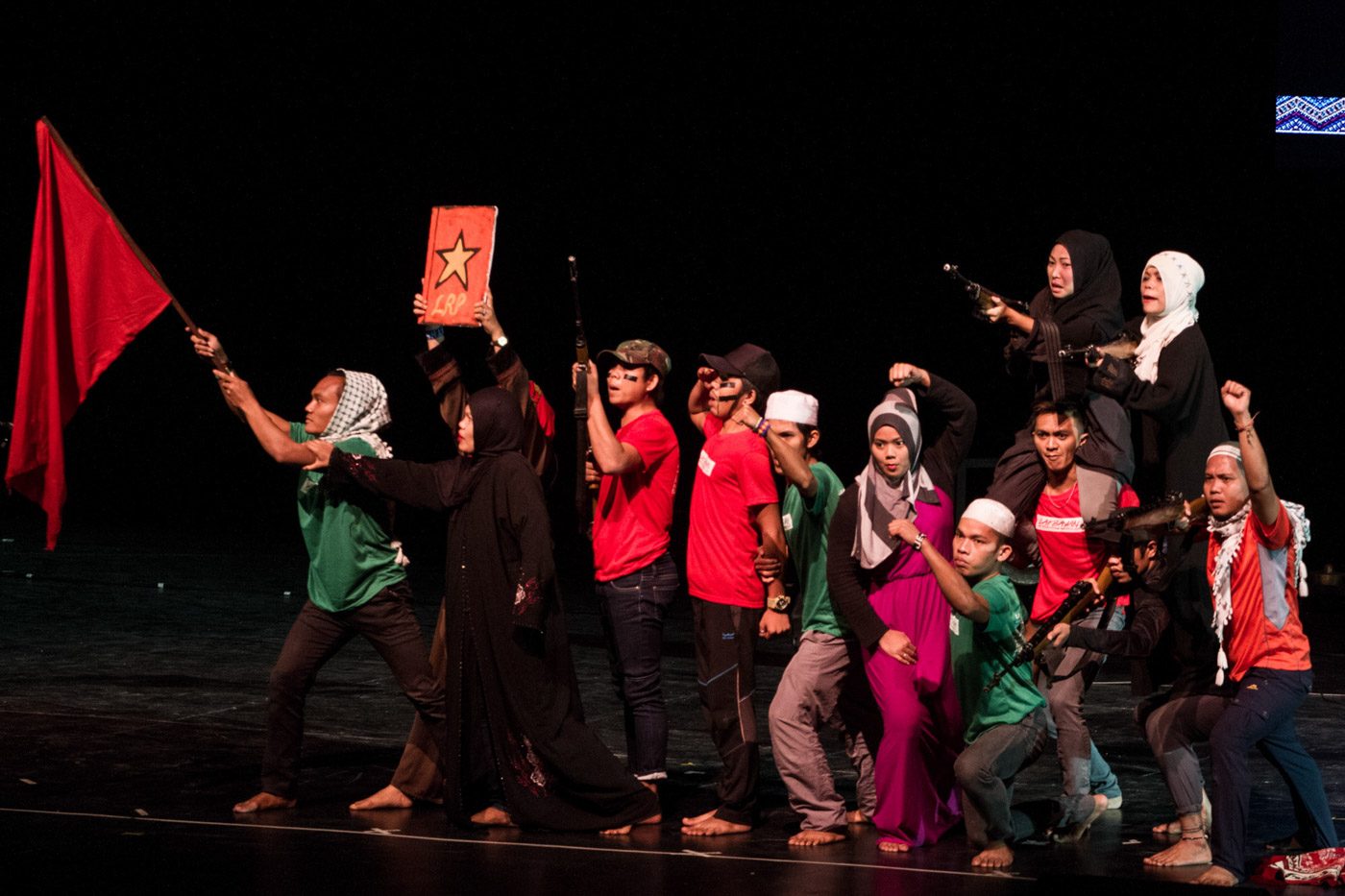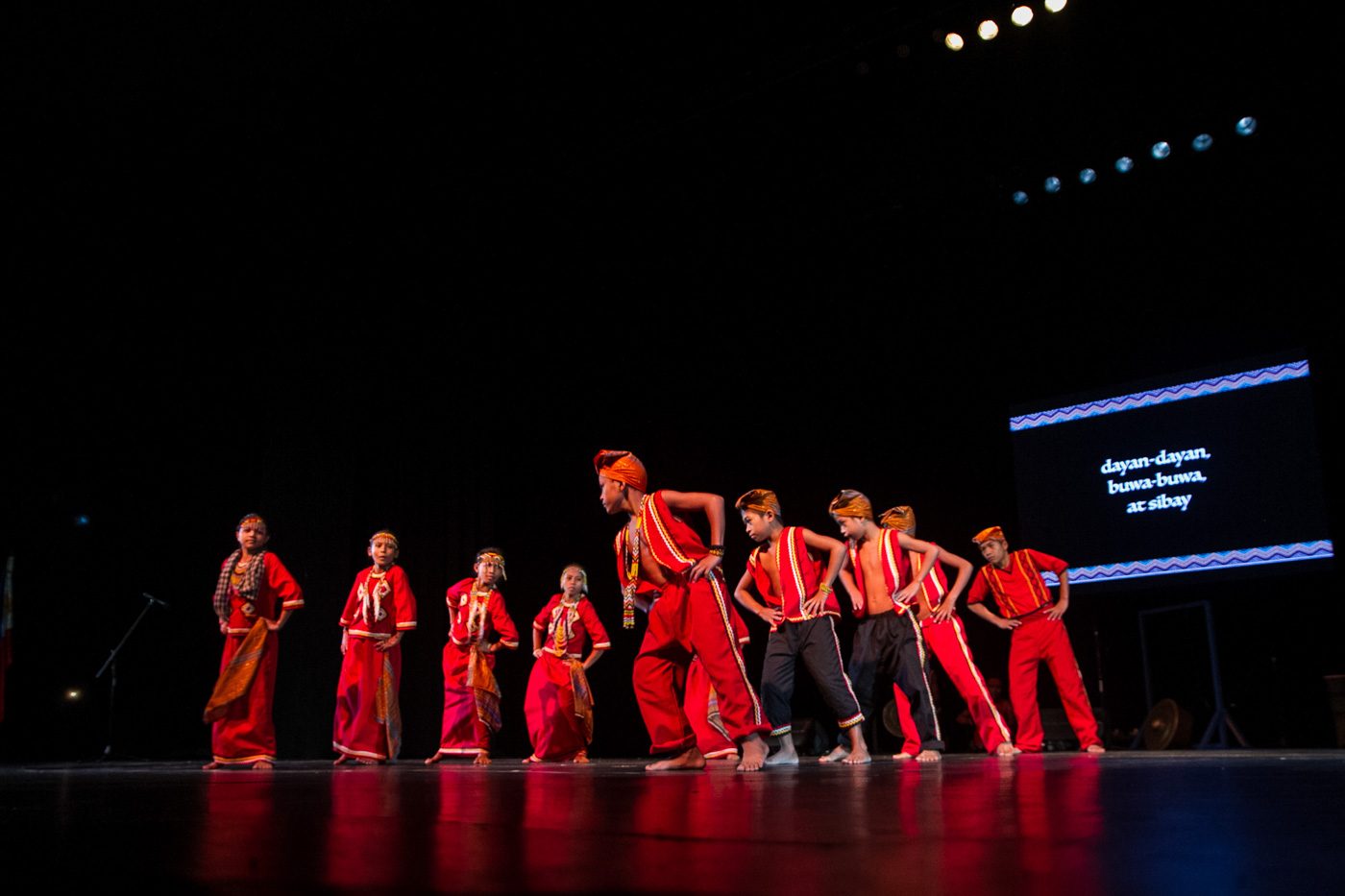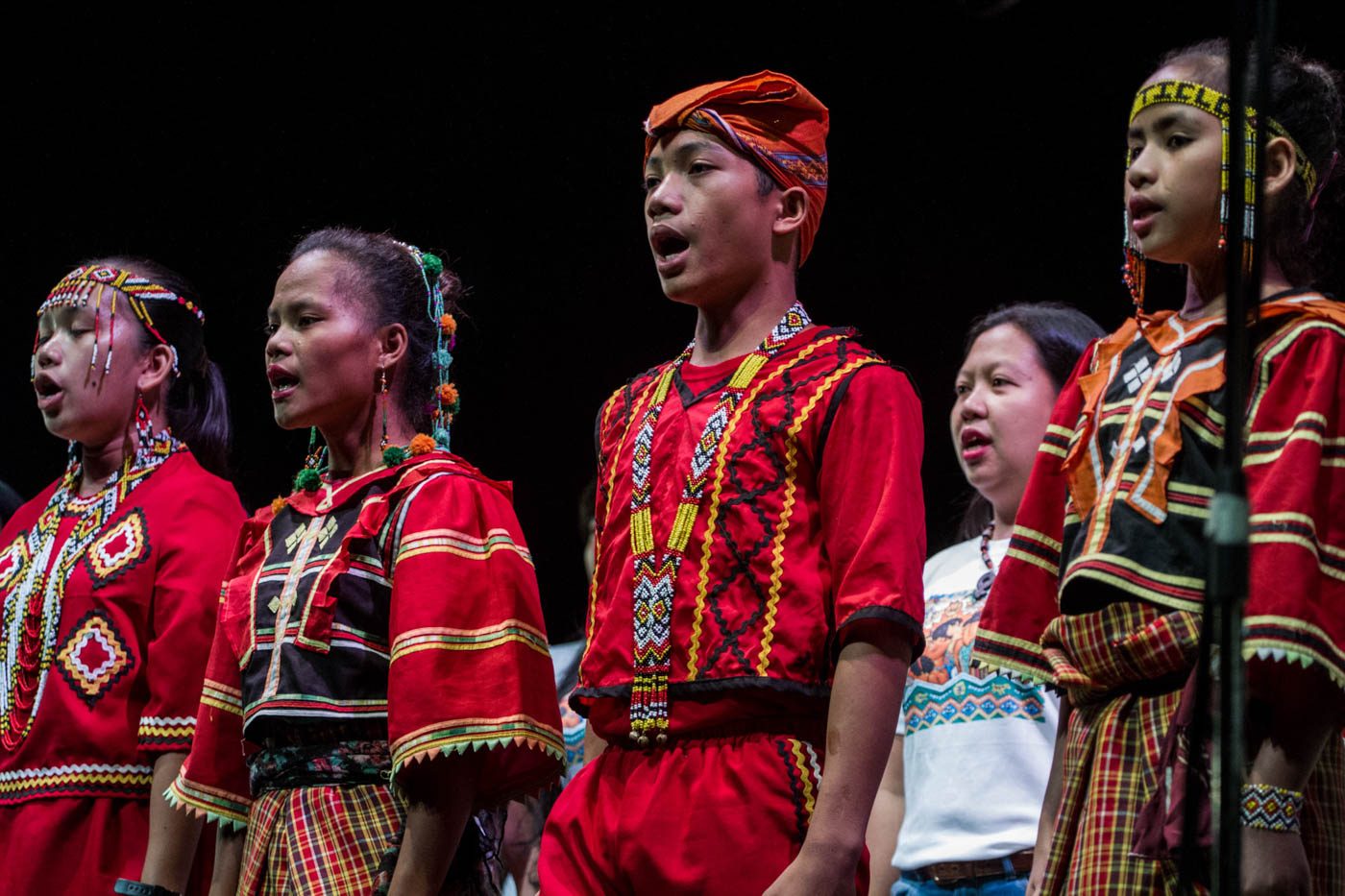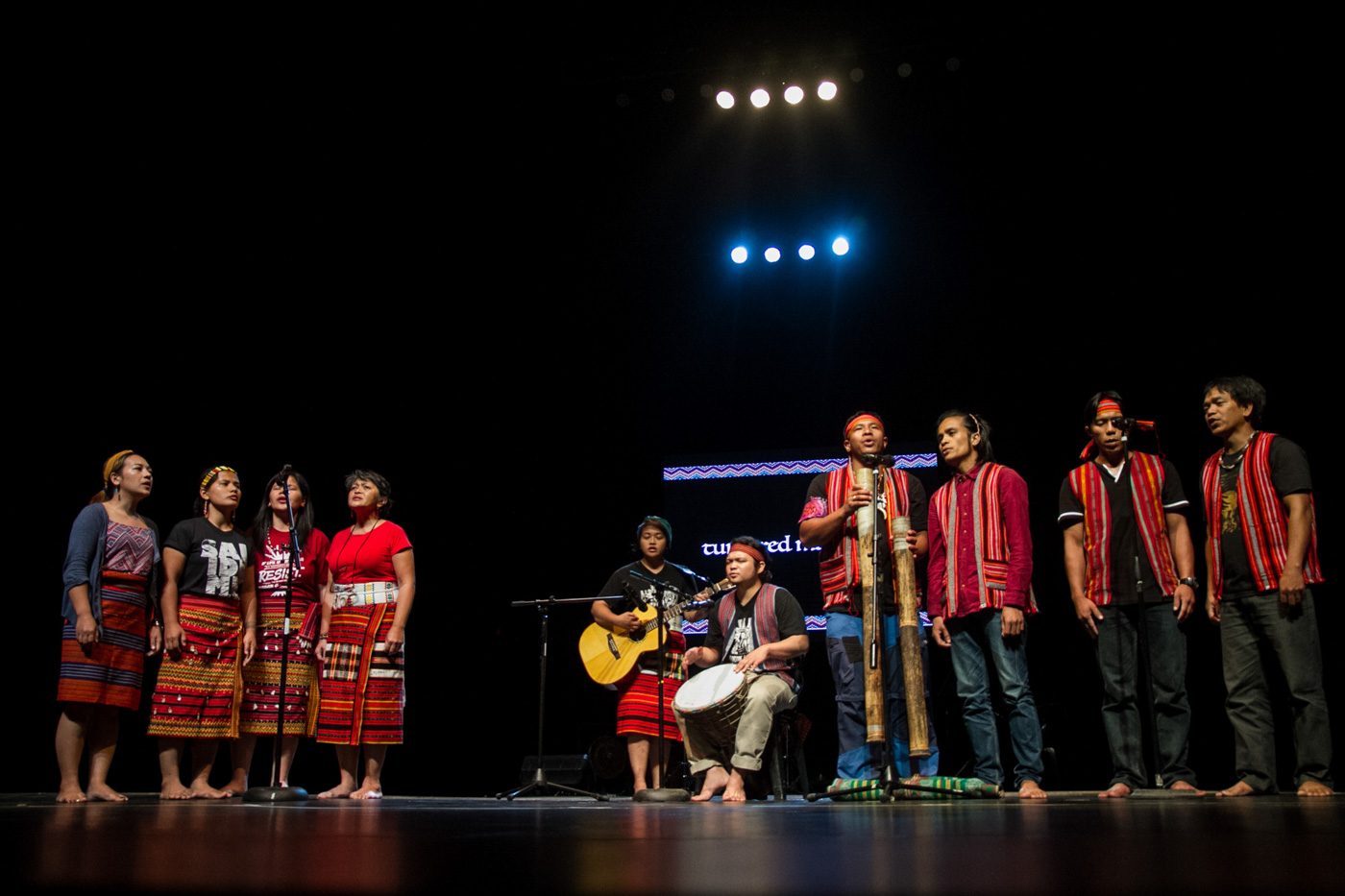SUMMARY
This is AI generated summarization, which may have errors. For context, always refer to the full article.

MANILA, Philippines – Red-clad tribal children were waiting for the cue to engage. This time, they were not in a rally or a dialogue. They were on the stage of the University of the Philippines (UP) Theater to perform for “Hugpungan.”
The 3-week protest camp of the country’s minorities ended in a two-hour display of cultural performances on Monday, September 18.
Dubbed as Hugpungan, a Bisaya word for convergence, the show was not a competition among the regions, indigenous communities, and tribes.(READ: Over ‘failure’ to protect minorities, House gives NCIP P1,000 budget)
“It was an exhibition of unity of the national minorities and supporters against national oppression,” said Jerome Succor Aba, co-chair of national minorities alliance Sandugo.

“These cultural performances of the Moros and our indigenous people from various regions signify that we are part of one big movement for social justice, that we are distinct but not separated,” said Aba.
Students of the Alternative Learning Center for Agriculture and Livelihood Development (ALCADEV) from Caraga entertained the audience as they presented how Manobo men win the hearts of their women through the dances of courtship and love called “Dayan-dayan,” “Buwa-buwa,” and “Sibay.” (READ: Indigenous peoples march to ask Duterte to lift martial law in Mindanao)
ALCADEV student Gleeza Joy Belandrez said that the Manobos’ courtship dance shows that the Lumads in Caraga are “peaceful and loving people.”
“It also shows how the Manobos value women and our mothers,” she said. Belandrez added that through cultural performances, “we are able to introduce ourselves and the reasons of our fixation to our ancestral lands.”

The 15-year old Manobo girl is one of the hundreds residents of sitio Han-ayan in Diatagon village, town of Lianga in Surigao del Sur, who witnessed the brutal killings of Lumad leaders Dionel Campos and Datu Bello Sinzo, and school director Emerico Samarca on September 1, 2015.
The “Lianga Massacre” led to the enforced evacuation and displacement of more than 4,000 indigenous people from their communities to the Tandag City sport complex for more than a year.
Members of the Dap-ayan ti Kultura iti Kordilyera (DKK) serenaded the crowd with Salidummay songs that speak stories of struggle for life and land of the Igorots.
DKK’s Alma Sinumlag said that these Cordilleran melodies “are poems with hymns that portray how the Igorots live, bleed, and ready to die for our ancestral lands.”
“We hear songs about conflict with destructive extractions or mining operations, and dams that disturb the flow of the river, hinder the flow of life, and destruct biodiversity,” said Sinumlag.
The crowd cheered as the Aytas of central Luzon occupied the stage, and applauded after every tribal prayer and poem recited in different regional languages. (READ: Indigenous peoples march to ask Duterte to lift martial law in Mindanao)

After a solemn reading of the Qur’an, the Moros of Mindanao performed a theater production that demonstrates the plight of the Bangsamoro for self-determination and the cry for just and lasting peace in southern Philippines.
The Subanen tribe of the western Mindanao region showed how they defeated Spanish conquerors that tried to seize their ancestral lands.
The UP Filipiniana dance group represented the Tagalogs with the Subli dance. It is a Catholic devotional performance honoring the Holy Cross.
Rey Paulin, coordinator of Hugpungan 2017, said that to understand the plight of the Moros and the indigenous people, “we must understand each and every culture.”
He said that the lives of the rest of the Filipino people are “connected with the struggle” of the national minorities in “protecting the environment and defense of their ancestral lands.”
“Why do they oppose mining, logging, mono-cropping and other development aggression? We can only understand their reasons if we will come to know them better,” he added.
The UP Diliman community hosted the Lakbayan ng Pambansang Minorya, which started on August 31 and will culminate on September 21.
UP Chancellor Michael Tan expressed his gratitude to the Moro and indigenous people “who came all the way here in Metro Manila to let us learn about the things that we – people in the cities – ignore and tend to take for granted.”
Tan vowed “to continue our support to our brethren national minorities,” inviting them to come back and hold the Lakbayan 2018 again at the state university.
The university has hosted the protest caravan and camp of the indigenous people for 3 consecutive years already.
The cultural show was ended with a performance from Bayang Barrios, who herself is a Manobo, together with all the national minority groups. – Rappler.com
Add a comment
How does this make you feel?
There are no comments yet. Add your comment to start the conversation.